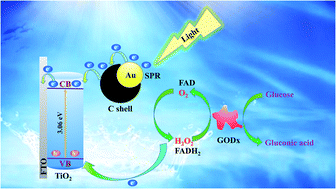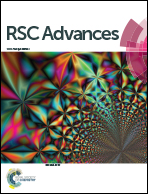Photoelectrochemical enzymatic sensor for glucose based on Au@C/TiO2 nanorod arrays†
Abstract
In this work, a photoelectrochemical (PEC) glucose biosensor was synthesized on the basis of a type of Au@C/TiO2 composite by using an unsophisticated secondary hydrothermal strategy. The compounded Au@C/TiO2 material was characterized by XRD, SEM, TEM, UV-vis, and XPS to identify the composition and the purity of the phase. Glucose oxidase (GODx) was immobilized on the Au@C/TiO2. The PEC biosensor presented satisfactory stability and outstanding reproducibility. The range and the sensitivity of the linear measurement were 0.1–1.6 mM and 29.76 μA mM−1 cm−2, respectively, and the detection limit was low (0.049 mM). The GODx/Au@C/TiO2/FTO biosensor presented excellent efficiency in detecting glucose, suggesting the great potential application of this synthesized material in PEC biosensors.



 Please wait while we load your content...
Please wait while we load your content...